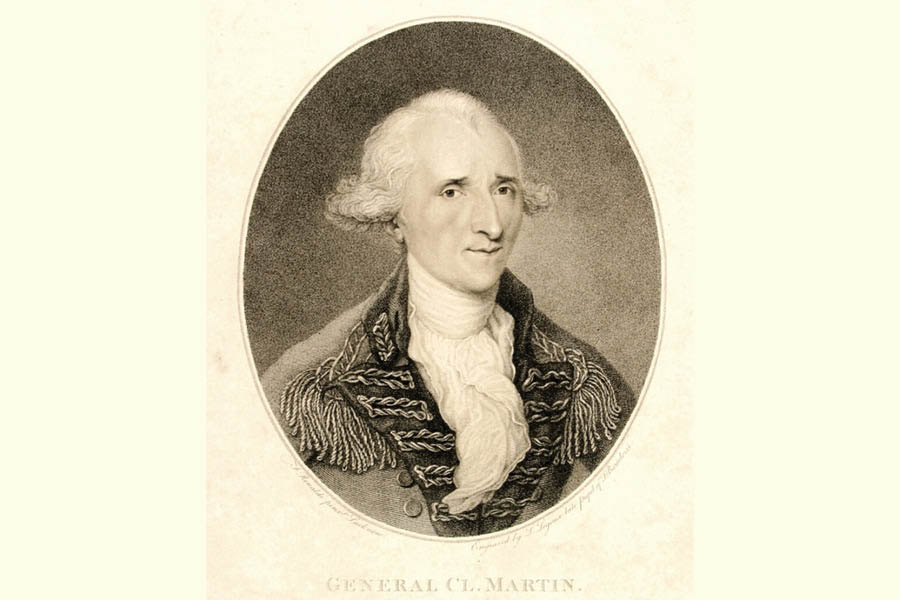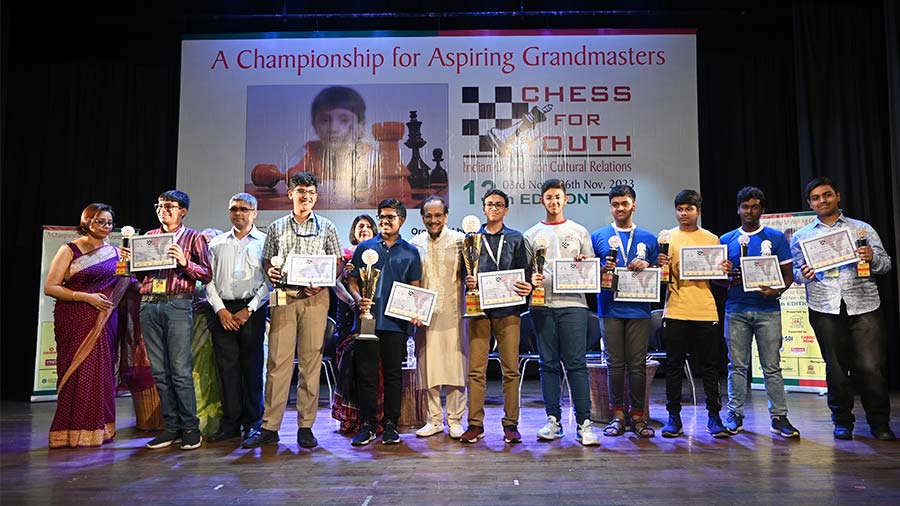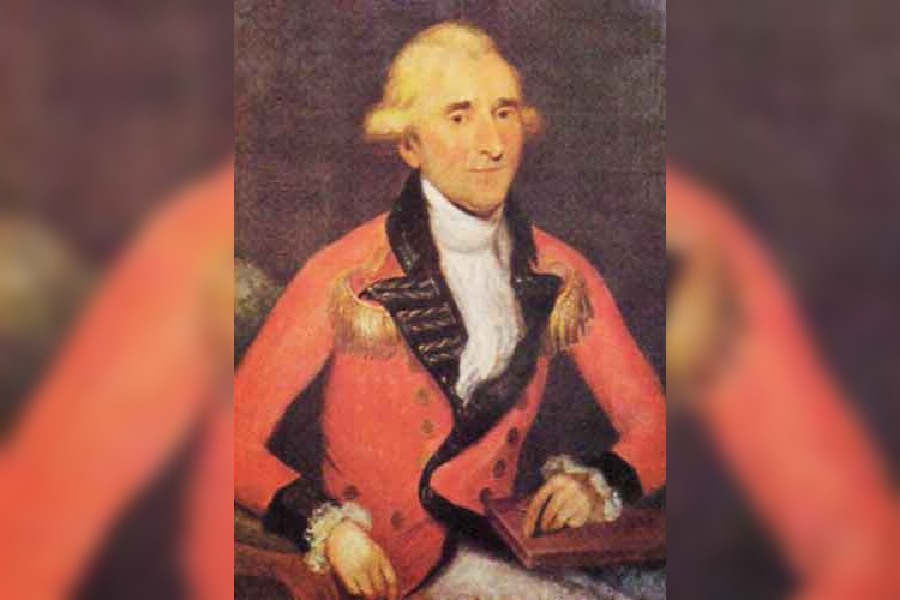Eighteenth century Calcutta witnessed the arrival of many adventurers and prospectors from different parts of the world. One such man arrived in the city from distant Lyon, lying at the confluence of the rivers Rhône and Saône. He left behind a legacy that is even today a vital part of the city’s educational landscape.
Claude Martin was born in Lyon in 1735. As a student, he excelled in mathematics but was bit of a rebel. Despite his family having businesses in vinegar, mustard and brandy, Martin, after completing his schooling, joined an establishment in the trade of silk yarn. His spirit, however, sought something more exciting and at the age of 16, Claude Martin signed up with the Compagnie des Indes (French East India Company) and was sent to India.

(Top) La Martiniere, Calcutta, by Francis Frith and (above) La Martiniere, Lucknow
In India, Martin served as a dragoon (horse-mounted soldier) and fought in the Carnatic Wars against the English East India Company. In 1761, when the French lost Pondicherry to the English, Claude Martin was taken prisoner. His captors soon found out that he was well educated, was known for his cool head and resourcefulness, and had fought bravely in battle. He was initially given charge of looking after a detachment of his fellow soldiers. For his part, the wily Martin had figured out that the English sun was on the ascendancy and decided to switch sides.
In 1764, having proved his loyalty to his new masters, Claude Martin arrived in Calcutta and received his first commission in the company army as a lieutenant and was posted at Fort William. Over the coming years, Martin distinguished himself in multiple ways. He was evidently a man of many parts: he drew a map of Calcutta in 1764, illustrating his cartographic skills. He was also involved in the survey of Bengal under the company’s surveyor general James Rennell. Martin was also a patron of the eccentric painter, Zoffany.

Claude Martin’s bust inside the school
Martin’s career hit a new high when he moved to Lucknow in 1776, taking up the post of superintendent of the Royal Arsenal of Oudh. Over time, Martin became a close friend and confidant of Nawab Asaf-ud-Daullah. Martin had arrived at Lucknow soon after the city had become the new capital of Oudh, replacing Faizabad. Together, the Nawab and his French ally went about designing the new capital. Kothi Hayat Baksh – at present, the Uttar Pradesh governor’s residence – was designed by Martin. He also oversaw the construction. Martin’s Lucknow residence – Farhat Baksh, and his country palace – Constantia, were renowned for their architectural splendour.
Martin was renowned for having a personal library housing over 4,000 books and several rare manuscripts. His personal collection included around 650 Company-style paintings of birds – drawn by Mughal style-trained artists. Martin was also famous for throwing lavish parties – both for his European brethren as well as the Muslim nobility of Lucknow. In fact, Martin’s parties were a talk of the town in late-18th century Lucknow.
Doing justice to his roots, Martin also proved to be an astute businessman. He operated a private bank in Lucknow and in 1794, loaned £250,000 to the Nawab of Oudh. He was also into indigo farming and exported indigo as well as clothing to Europe. As part of his job as chief of the Royal Arsenal, Martin started a cannon foundry – a cannon made by Martin is said to have been used by the Company forces in the battle of Srirangapatnam to vanquish Tipu Sultan of Mysore. He introduced a new method of diamond-cutting to India, set up manufacturing units of gun powder, bred horses and minted coins.
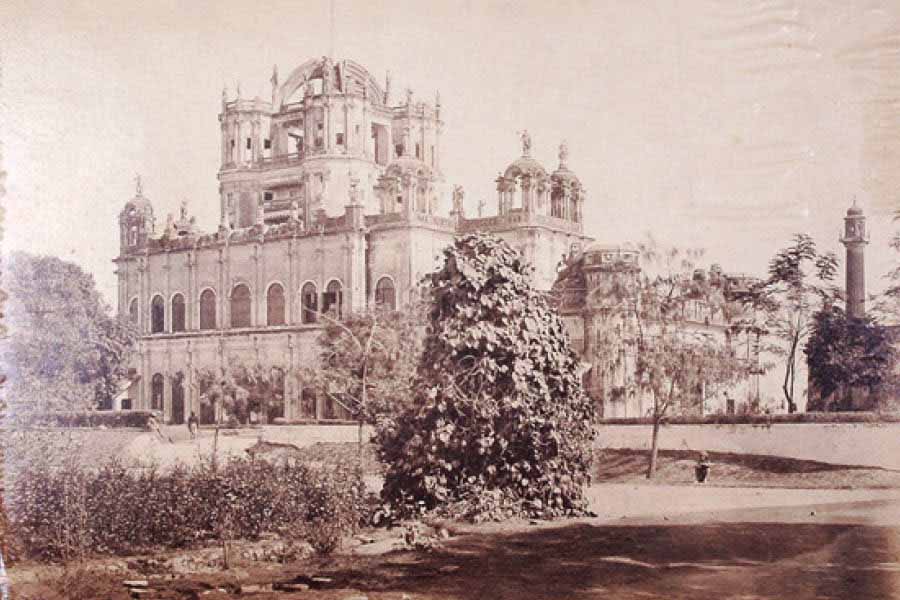
Martin bequeathed his beloved Constantia Palace (in picture) to be converted into an academy for imparting English education to the native children of Lucknow/Oudh
Martin’s diverse interests also included hot-air ballooning and just two years after the Montgolfier** made its first flight in France, Martin introduced the Nawab and other royals of Lucknow to this innovative experience.
Major General Claude Martin breathed his last on October 13, 1800, in Lucknow. His last Will and testament brought out the benevolent side of this mercurial Frenchman:
“I give and bequeath the sum of one hundred and fifty thousand rupees for to be placed at Interest in the most secure manner possible in the East India Company or Government papers bearing interest and that interest to be employed for the poor first having divided this Interest in three portions or parts one – for the relief of the poor of Lucknow of any religion – for the poor of Calcutta – for the relief of the Poor of Chandernaggur.”
In his Will, Martin also made significant provisions for his servants and staff. After his death, the Calcutta Gazette reported that in all, Martin left nearly forty lakh rupees for support and foundation of public establishments, charitable and literary: it included allotment of four lakh rupees for establishment of an educational institution in Calcutta and two lakhs for similar purpose in his birthplace of Lyon. He also bequeathed his beloved Constantia Palace to be converted into an academy for imparting English education to the native children of Lucknow/Oudh.
Martin’s largesse led to the foundation of the academic institutions known as the La Martinière College in Calcutta, Lucknow and Lyon – the three places he held dearest to his heart. In his will, Martin outlined every detail of the schools, from their location to the manner of celebrating the annual Founder’s Day.
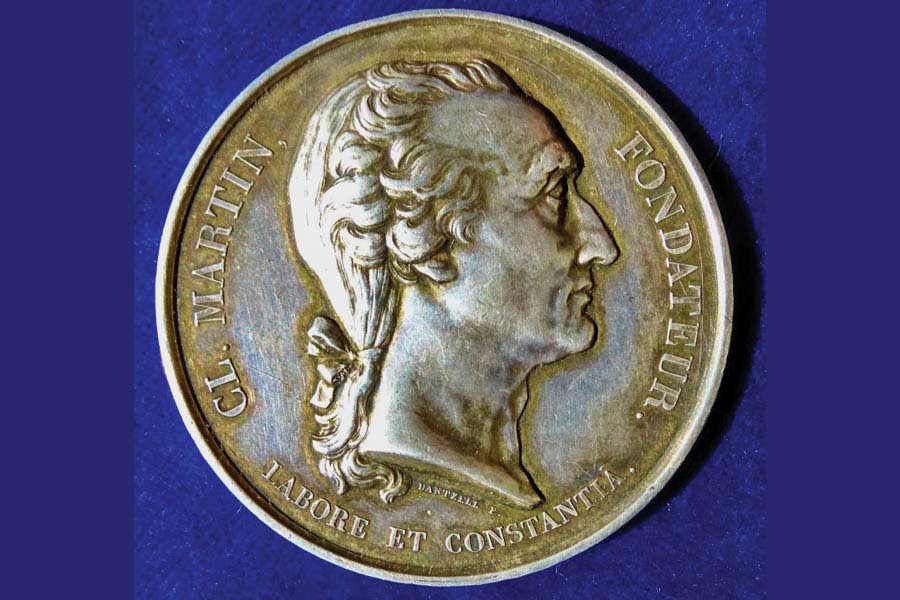
Lyon France 1874 Science & Art School silver prize medal of La Martinère College by Dantzell, obverse
Major General Claude Martin has been dead for over 200 years now. But the legacy of this man lives on to this day and binds the cities of Kolkata, Lucknow and Lyon in a unique bond.
* *The Montgolfier brothers – Joseph-Michel (1740 – 1810) and Jacques-Étienne (1745 – 1799) – were aviation pioneers, balloonists and paper manufacturers from the commune Annonay in Ardèche, France. They invented the Montgolfière-style hot air balloon, globe aérostatique, which launched the first confirmed piloted ascent by humans in 1783, carrying Jacques-Étienne.
